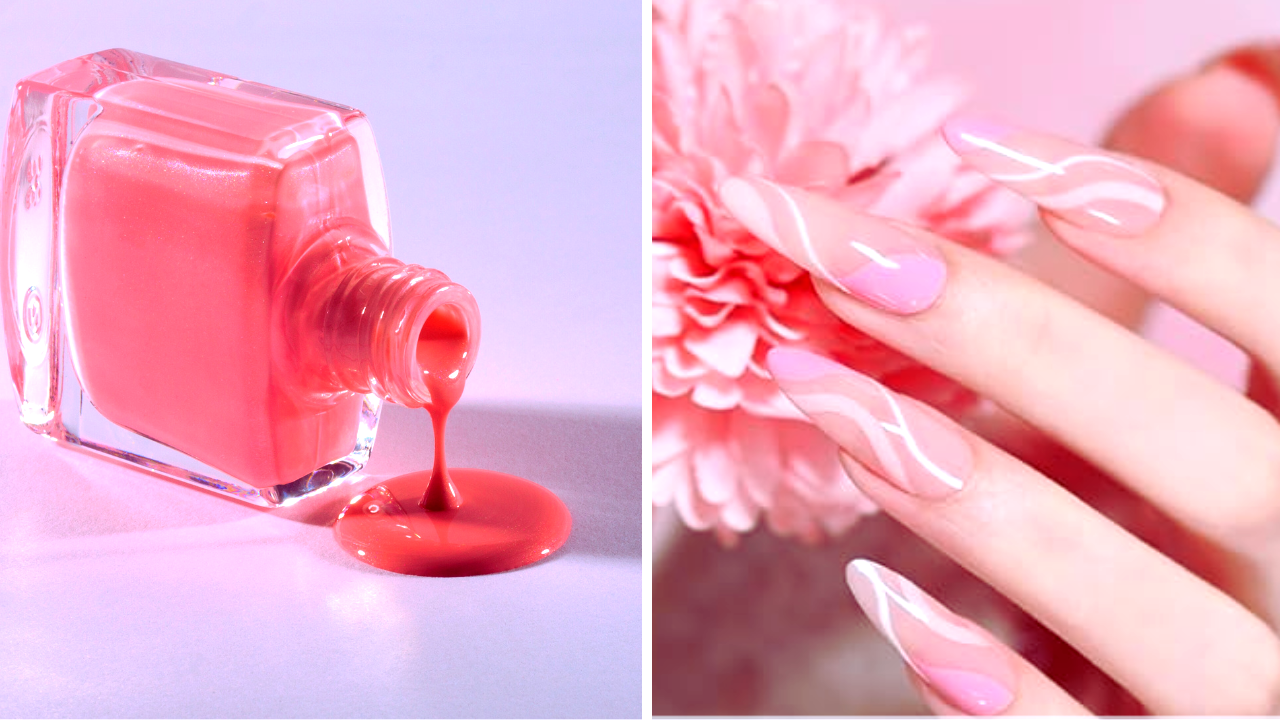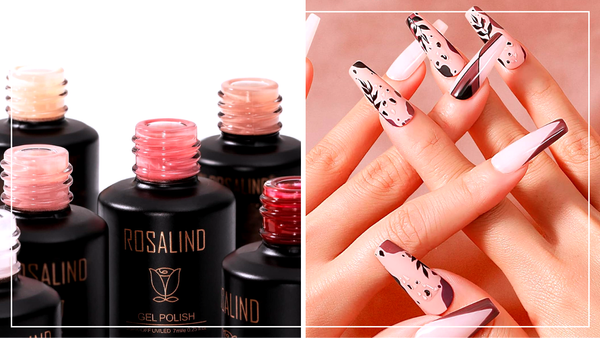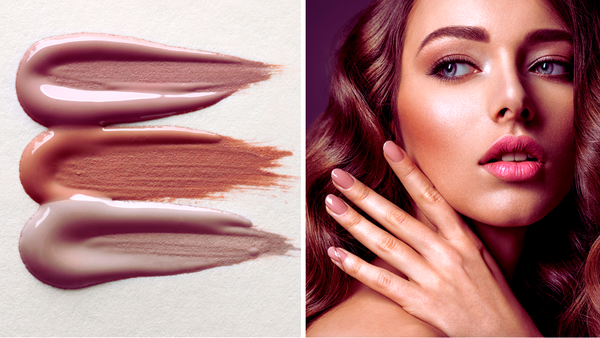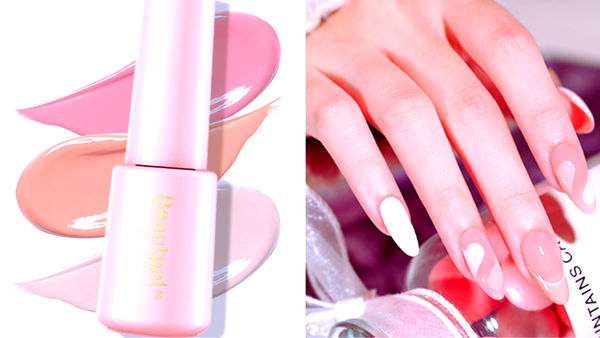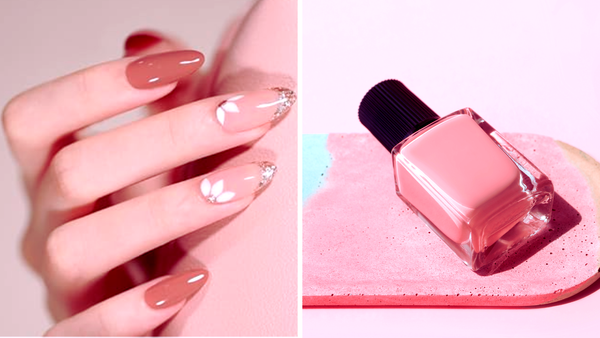Key Takeaways:
Durability and Application: Gel nail polish, especially in nude shades, offers a longer-lasting finish and requires UV or LED light to cure, unlike regular nail polish that dries naturally.
Health and Maintenance: Gel manicures can be tougher on nails due to the removal process but provide a more durable coat that resists chipping.
Aesthetic and Variety: Nude gel nail polish provides a glossy, more uniform appearance and often looks fresher for longer than its regular polish counterparts.
Introduction to Nail Polish Varieties
Nail polish technology has evolved significantly, offering more options than ever before. Among these, gel nail polish and regular nail polish are the most popular choices. Understanding the differences, particularly in popular nude shades, can help you make informed decisions about your nail care and aesthetics.
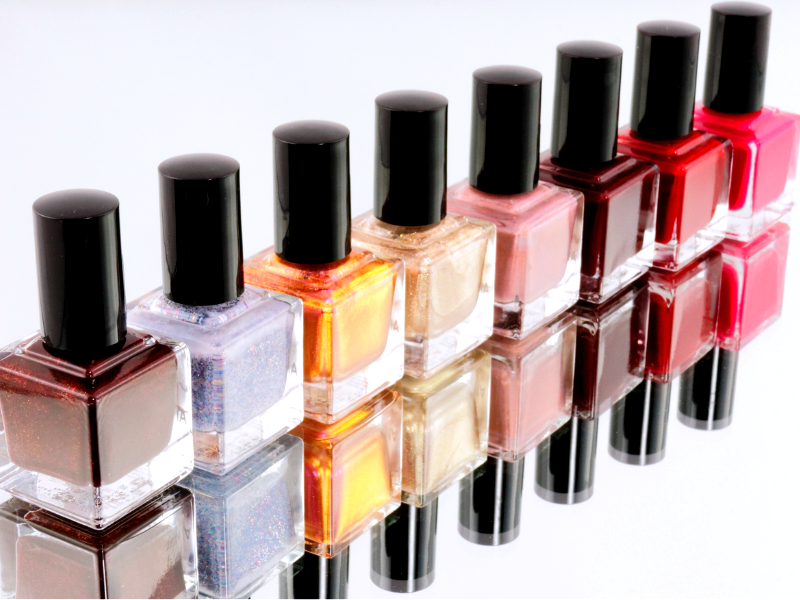
What is Gel Nail Polish?
Gel nail polish is a nail lacquer that requires curing under a UV or LED lamp. This process creates a hard, glossy layer more resistant to chipping than traditional nail polish. Nude gel nail polish, in particular, offers a subtle, elegant look that works well for both everyday wear and special occasions.
The Basics of Regular Nail Polish
Regular nail polish, or ordinary nail polish, is a liquid solution that can be applied directly to the nail and left to air dry. Unlike gel nail polish, it doesn’t require any special equipment to set. While it’s easier and quicker to apply, it generally doesn’t offer the same longevity or chip resistance as gel polish.
Composition Differences
The chemical composition of gel nail polish includes photoinitiators that harden under UV light, a process absent in regular nail polish. This fundamental difference not only affects the application process but also the durability and appearance of the polish.
Application Techniques
Applying gel polish involves a base coat, the color layer, and a top coat, each of which needs to be cured under a lamp. Regular nail polish application is more straightforward, typically requiring only a base coat, color, and top coat without needing a lamp.
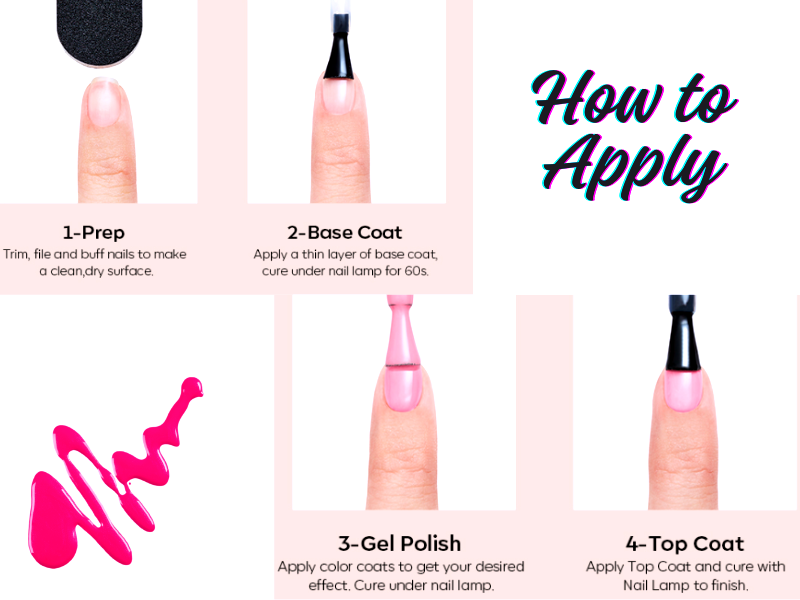
Durability and Longevity
One of the most significant advantages of nude gel nail polish is its durability. Gel manicures can last up to three weeks without chipping. In contrast, regular nail polish might start to chip within a few days, depending on the quality of the polish and the application technique.
Aesthetic Differences
Nude gel nail polish generally offers a more polished and glossy finish than regular nail polish. The uniformity and shine are maintained throughout the manicure's life, making it a preferred choice for those seeking a sophisticated, clean look.
Impact on Nail Health
When comparing how nude gel nail polish differs from regular nail polish, it's crucial to consider the impact on nail health. Gel manicures require exposure to UV or LED light to cure the polish, which can be a concern for some. Prolonged exposure to UV light has been linked to skin aging and, in rare cases, skin cancer. However, many modern salons use LED lamps, which significantly reduce exposure time and are considered safer. Regular nail polish, on the other hand, dries naturally and poses no such risks, making it a preferable option for those concerned about UV exposure.
Moreover, gel polish can be more taxing on the nail beds than regular nail polish. The removal process of gel polish often involves soaking the nails in acetone and can lead to dehydration and weakening of the nails if not done carefully. Regular nail polish is typically removed with a less aggressive nail polish remover, which, while still involving chemicals, generally does not affect the integrity of the nail as much. To mitigate damage, applying cuticle oil and regular hydration can help maintain nail health regardless of the polish type used.
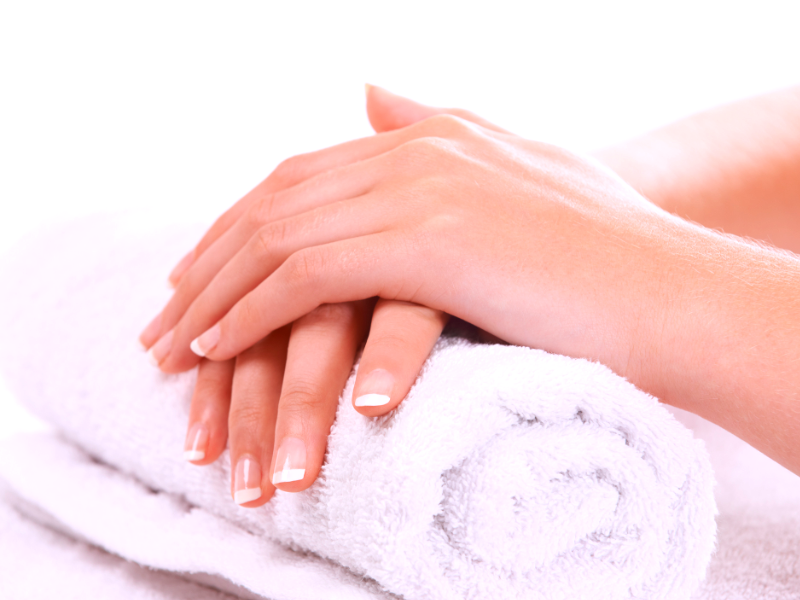
Exploring the Curing Process of Gel vs. Regular Nail Polish
Gel nail polish and classic nail polish differ significantly in their curing processes, which impacts everything from application time to durability. Gel polish requires curing under a UV or LED lamp to set, a process that takes about 30 seconds to a minute per coat. This curing process creates a hard, durable layer resistant to smudging and chipping. Unlike regular nail polish, which air dries and can take 20 minutes to an hour to dry completely, gel polish's quick curing time allows for a faster and more efficient manicure experience.
On the other hand, regular nail polish dries naturally, which can be a slower process prone to smudges if not fully dry. The absence of UV or LED light means no special equipment is needed, making it more accessible for home use. However, the longer drying time increases the chances of imperfections and requires a steadier hand or additional drying aids like quick-dry top coats or drying drops. This fundamental difference in drying and curing not only affects the application process but also influences the overall convenience and final appearance of the manicure.
The Role of UV and LED Lights in Gel Polish Curing
Gel nail polish differs significantly from regular nail polish due to its curing process, which involves UV or LED lights. Unlike regular nail polish dries naturally in the air, gel polish requires exposure to UV or LED light to set properly. This process creates a chemical reaction within the gel polish, transforming it from a liquid to a solid state. This curing step is crucial as it ensures the durability and glossy finish of gel manicures, which is a stark contrast to the often matte finish and less durable nature of air-dried regular nail polish.
The choice between UV and LED lamps for curing gel polish also impacts the application time and safety. LED lamps are generally faster, taking about 30 seconds to cure each coat, while UV lamps can take up to two minutes per coat. However, there are concerns about the potential skin damage from prolonged exposure to UV light, making LED lamps a popular choice among both nail salons and home users. The lamp's effectiveness in curing the gel polish is essential to avoid soft nails or a tacky finish, which can occur if the gel polish is not cured properly.
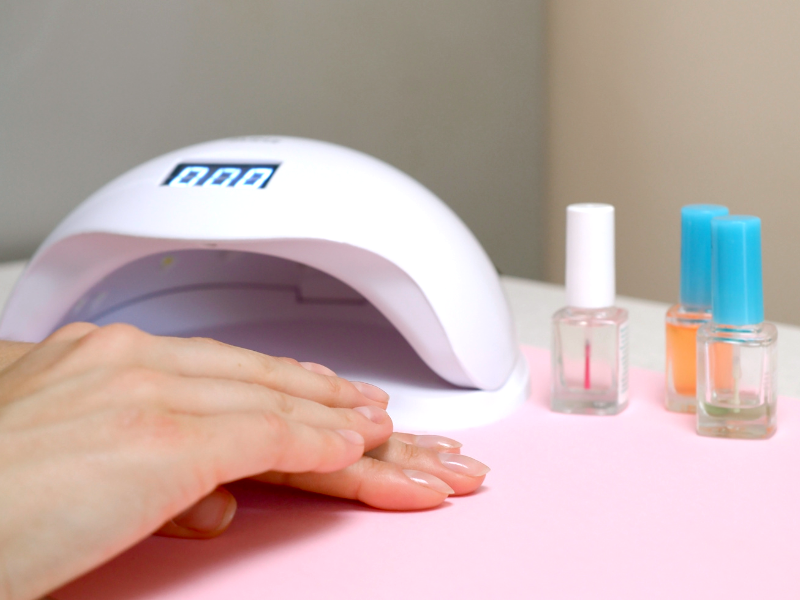
Innovations in Gel Polish Formulas
Recent advancements in gel polish technology have not only improved the quality and variety of available colors but also enhanced the health aspects of applying gel polish. Modern gel polishes are formulated with added vitamins and minerals to help nourish the nail bed and cuticle oil, promoting healthier nails underneath the stunning shades of gel. This is a significant shift from traditional nail polish, which can sometimes contain harsh chemicals that may lead to nail damage or affect the nails surrounding the skin if used frequently.
Moreover, these innovative gel polishes are designed to minimize the potential damage during the removal process. Unlike regular nail polish, which can often be removed with simple acetone-soaked cotton balls, gel polish removal requires a more careful approach to prevent nail damage. Advanced gel formulas are easier to lift naturally without aggressive scraping or an extended acetone bath, which helps preserve the natural strength and condition of the nails. This development not only enhances the appeal of gel manicures but also aligns with the growing consumer preference for beauty products that offer both style and substance.
Nail Art Possibilities with Gel vs. Regular Polish
The versatility of gel polish in nail art is markedly superior to regular nail polish due to its texture and curing characteristics. Gel polish remains manipulable until cured, giving nail artists and enthusiasts a prolonged window to create intricate designs or corrections without the polish drying prematurely. This feature is particularly beneficial for complex nail art techniques such as marbling, detailed line work, or incorporating accessories like rhinestones and stickers, which require precision and correct application time. Its quicker air-drying nature demands a faster work pace, making it less forgiving during the artistic process. While regular polish is suitable for straightforward applications and simpler designs, it can be challenging to use for elaborate nail art that requires layering or detailed brushwork. The faster drying time can also lead to clumping or unevenness if the polish begins to set before the design is complete. Thus, for nail art enthusiasts looking to explore more complex and creative designs, gel polish often proves to be the more accommodating option.
Technological Advancements in Application
The application process of nude gel nail polish versus regular nail polish highlights significant technological advancements in nail care. Gel polish applications require a base coat, a gel color, and a top coat, each of which needs to be cured under a UV or LED lamp. This curing process creates a chemical reaction that makes the gel hard and durable. Introducing LED lamps has revolutionized this process by speeding up curing times and reducing UV exposure, enhancing both safety and convenience for users.

On the other hand, applying regular nail polish is a simpler and quicker process, involving the application of a base coat, color, and top coat that air dries. While this might be less time-consuming, the finish and durability offered by gel polish are unmatched. Innovations in regular polish formulas have attempted to bridge this gap, with some brands offering quicker drying solutions and improved longevity without UV light. These advancements reflect the nail industry's response to consumer demands for efficiency and health-conscious practices.
Health and Nail Care
Frequent use of gel manicures can be harsh on natural nails. The removal process, involving soaking in acetone and often scraping, can weaken the nail bed. Regular nail polish, while less durable, is less damaging in the long term and easier to remove.
Maintenance and Upkeep
Maintaining a gel polish manicure involves regular filling and careful removal to avoid nail damage. Regular nail polish is lower maintenance, with straightforward application and removal processes that many find appealing for quick color changes.
Cost Implications
Due to the materials used and the process involved, getting a gel manicure at a nail salon typically costs more than a regular manicure. However, depending on individual needs, the longer-lasting finish might offer better value for money over time.
DIY Considerations
For those who prefer home manicures, investing in a UV or LED lamp is necessary for gel polish but not regular polish. This initial investment can be significant, but for gel polish enthusiasts, it’s often worth the cost.
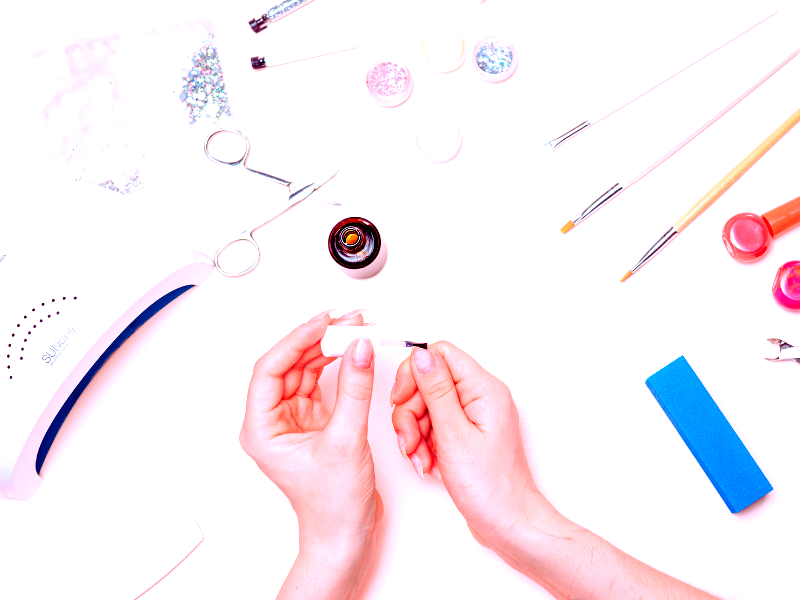
Environmental and Health Safety
The curing process of gel polish involves UV light, which has raised some concerns about skin safety. Regular nail polish does not involve exposure to UV light, posing less risk in this regard.
Removal Process
Remove gel polish with an acetone soak, which can be more time-consuming and harsher on the skin and nails than regular nail polish remover. This process is crucial to avoid damaging the natural nail.
Popular Trends in Nude Gel Polish
Due to its versatility and subtle elegance, nude gel polish has become a staple in both professional environments and casual settings. It complements any outfit and suits all skin tones, making it a flattering choice.
Conclusion on Differences
Understanding the difference between nude gel nail polish and regular nail polish, as well as its use in acrylic nails in terms of application, durability, aesthetics, and maintenance, can help you choose the right type of manicure based on your lifestyle, budget, and personal preference.
FAQs
Can I switch from gel to regular nail polish without damaging my nails?
Yes, you can switch between gel and regular nail polish. However, ensure proper removal techniques for gel polish to prevent nail damage.
How often should I take a break from gel manicures to maintain nail health?
It's advisable to take a break every three to four months to allow your natural nails to recover and breathe.
Are there any quick-dry solutions for regular nail polish that can mimic the durability of gel polish?
While quick-dry top coats can improve the drying time and add a layer of shine similar to gel, they do not provide the same level of durability or chip resistance as gel polish.
